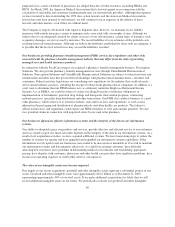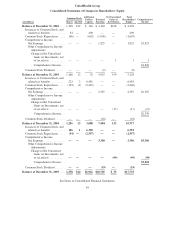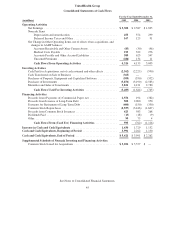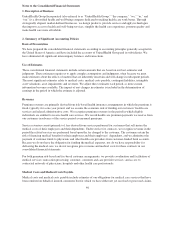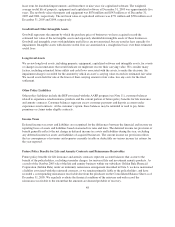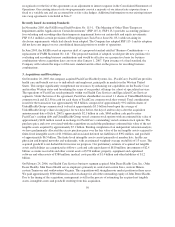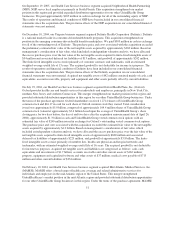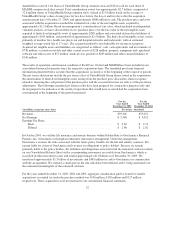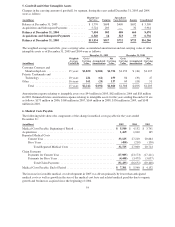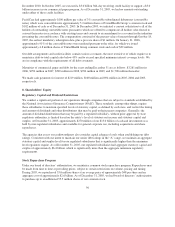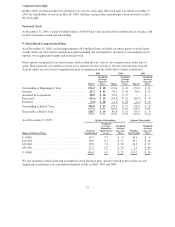United Healthcare 2005 Annual Report Download - page 51
Download and view the complete annual report
Please find page 51 of the 2005 United Healthcare annual report below. You can navigate through the pages in the report by either clicking on the pages listed below, or by using the keyword search tool below to find specific information within the annual report.
Policy Acquisition Costs
For our health insurance contracts, costs related to the acquisition and renewal of customer contracts are charged
to expense as incurred. Our health insurance contracts typically have a one-year term and may be cancelled upon
30 days notice by either the company or the customer.
Stock-Based Compensation
We account for activity under our stock-based employee compensation plans under the recognition and
measurement principles of Accounting Principles Board Opinion No. 25, “Accounting for Stock Issued to
Employees.” Accordingly, we do not recognize compensation expense in connection with employee stock option
grants because we grant stock options at exercise prices not less than the fair value of our common stock on the
date of grant.
The following table shows the effect on net earnings and earnings per share had we applied the fair value expense
recognition provisions of Statement of Financial Accounting Standards (FAS) No. 123, “Accounting for Stock-
Based Compensation,” (FAS 123) to stock-based employee compensation.
For the Year Ended
December 31,
(in millions, except per share data) 2005 2004 2003
Net Earnings
As Reported ...................................................... $3,300 $2,587 $1,825
Compensation Expense, net of tax effect ................................ (160) (132) (122)
ProForma........................................................ $3,140 $2,455 $1,703
Basic Net Earnings Per Common Share
As Reported ...................................................... $2.61 $ 2.07 $ 1.55
ProForma........................................................ $2.48 $ 1.96 $ 1.45
Diluted Net Earnings Per Common Share
As Reported ...................................................... $2.48 $ 1.97 $ 1.48
ProForma........................................................ $2.36 $ 1.87 $ 1.38
Weighted-Average Fair Value Per Share of
OptionsGranted ................................................... $13$10$ 6
Information on our stock-based compensation plans and data used to calculate compensation expense in the table
above are described in more detail in Note 9.
As discussed more fully within Note 9, FAS No. 123 (revised 2004), “Share Based Payment,” (FAS 123R) was
effective during the first quarter of 2006, and requires us to measure compensation expense for all share-based
payments (including employee stock options) at fair value and recognize the expense over the related service
period. We adopted this standard on a retrospective restatement basis as of January 1, 2006 and the adoption did
not result in any change to the pro forma compensation expense amounts historically disclosed under FAS 123.
Net Earnings Per Common Share
We compute basic net earnings per common share by dividing net earnings by the weighted-average number of
common shares outstanding during the period. We determine diluted net earnings per common share using the
weighted-average number of common shares outstanding during the period, adjusted for potentially dilutive
shares that might be issued upon the exercise of common stock options or the conversion of convertible
subordinated debentures.
Derivative Financial Instruments
As part of our risk management strategy, we enter into interest rate swap agreements to manage our exposure to
interest rate risk. The differential between fixed and variable rates to be paid or received is accrued and
49



